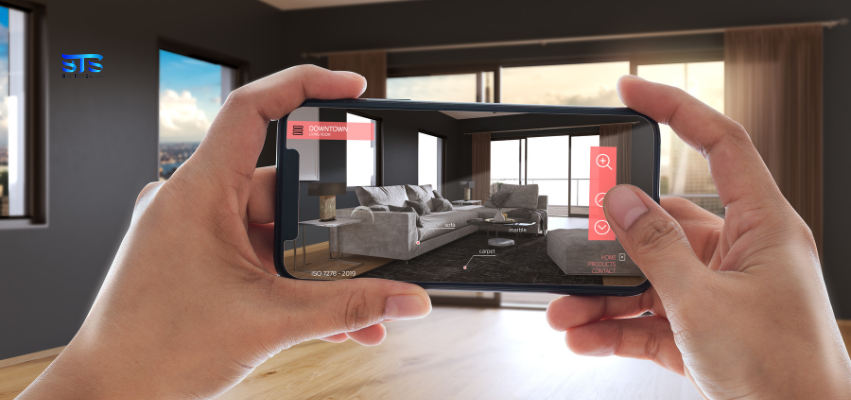
Transforming Web Design through Augmented Reality
Augmented Reality (AR) is transforming web design by creating immersive, interactive experiences that blend digital elements with the real world. This innovation enhances user engagement and sets new standards for digital interaction.
In today’s digital age, we often overlook the technologies that enhance our online experiences, such as pop-ups, intuitive interfaces, and sensors. These advancements, driven by UI/UX innovations, have transformed web design, making it more engaging and interactive. Among the most groundbreaking technologies are augmented reality (AR) and virtual reality (VR), which are set to revolutionize the future of web development.
What is Augmented Reality?
Augmented reality (AR) enhances real-world experiences by overlaying digital information onto the physical environment. This technology uses sensory inputs like visual, auditory, and haptic data to create an interactive experience. For example, AR allows users to see computer-generated images overlaid on their real-world surroundings through their smartphones.
How AR is Transforming Web Design
AR is adding new dimensions to web design by integrating digital elements into the real world. This technology enables the creation of panoramic images, interactive videos, and more engaging user interfaces. In digital marketing, AR allows for more attractive and convenient product displays, enhancing customer engagement and increasing sales.
Practical Applications of AR
- E-commerce: AR enables customers to virtually try on clothes or see how furniture would look in their homes, enhancing the shopping experience.
- Education: AR can create immersive learning environments, making complex concepts easier to understand.
- Tourism: Virtual tours powered by AR allow users to explore destinations before visiting them in person.
- Healthcare: AR assists in medical training and patient care, providing real-time data and interactive simulations.
- Manufacturing: AR aids in visualizing complex machinery and processes, improving efficiency and safety.
- Real Estate: AR offers virtual tours of properties, allowing potential buyers to explore homes remotely.
- Marketing: AR enhances product presentations and advertisements, making them more engaging and memorable.
- Logistics: AR improves warehouse management and navigation, optimizing operations and reducing errors.
Enhancing User Experience with AR
AR has shifted web design from static to dynamic, offering a 360-degree user experience. This technology supports tactile interactions, allowing users to zoom in and scroll intuitively. AR also leverages contextual computing to understand user preferences and provide personalized content.
Voice Interaction in AR
AR applications can incorporate voice commands, making interactions more natural and user-friendly. This feature is particularly useful in industries like e-commerce and gaming, where hands-free operation enhances the user experience.
The Future of Web Design with AR and VR
The future of web design lies in the seamless integration of AR and VR. These technologies will continue to evolve, offering more realistic and flexible user experiences. As mobile devices become more powerful, AR will play a crucial role in enhancing web interactions, making them more engaging and efficient.
Conclusion:
Augmented reality is not just a technological novelty; it is a transformative tool that is reshaping web design. By blending the digital and physical worlds, AR offers new opportunities for creating immersive and interactive online experiences. BirajTech Services excels in developing AR and VR applications, leveraging technological advancements to deliver cutting-edge solutions.
